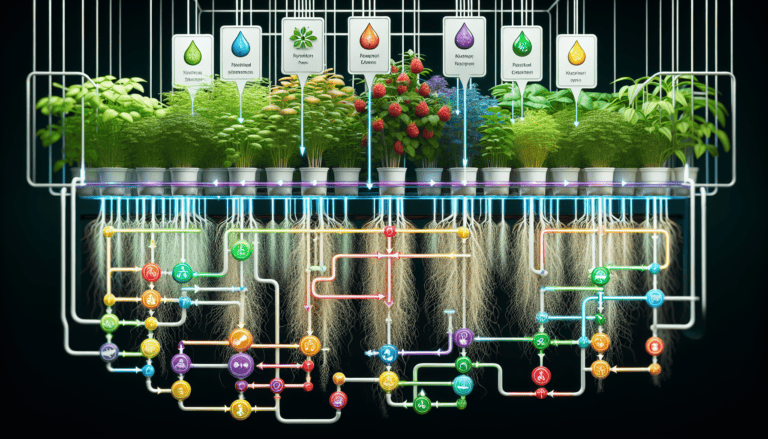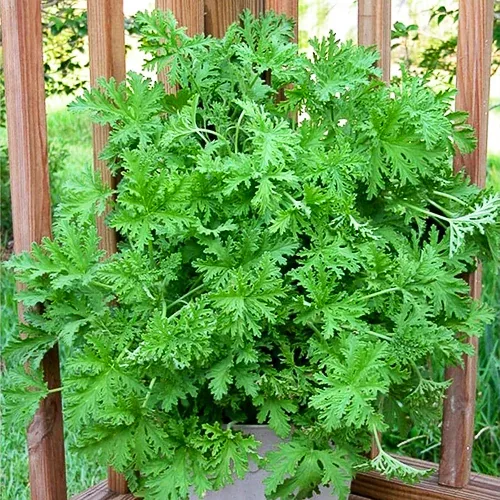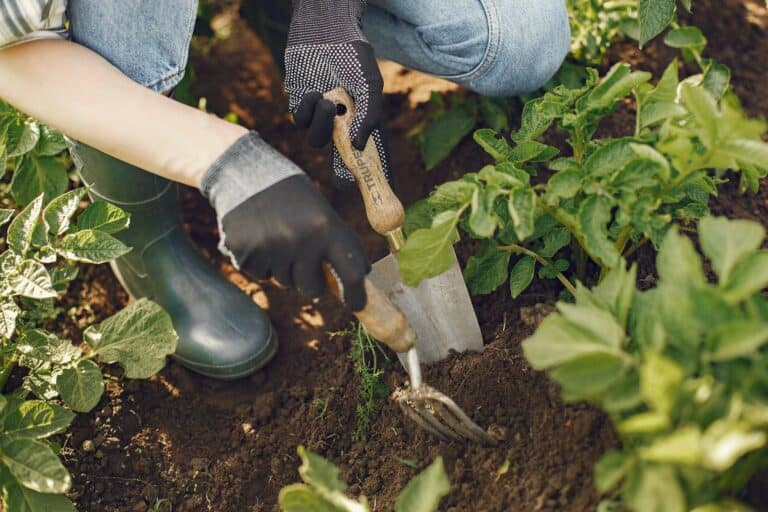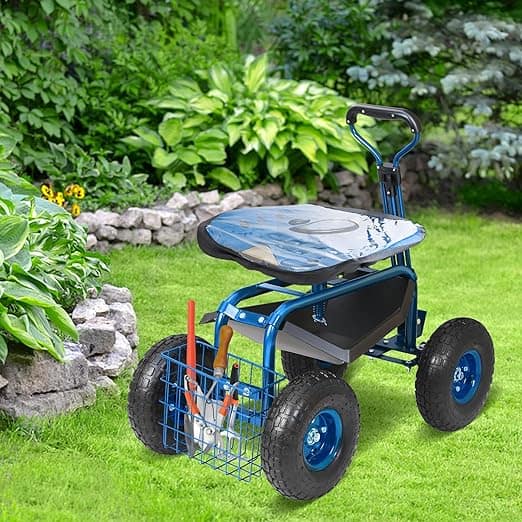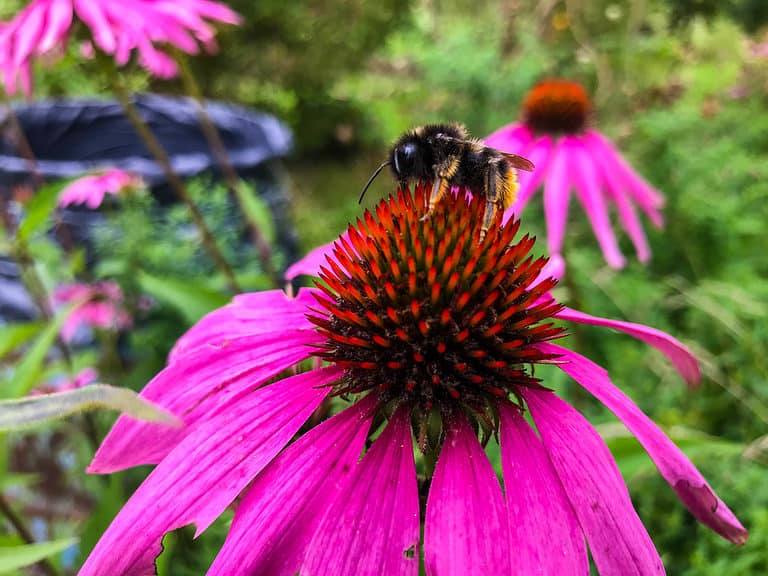How to Dry Herbs for Tea: A Comprehensive Guide
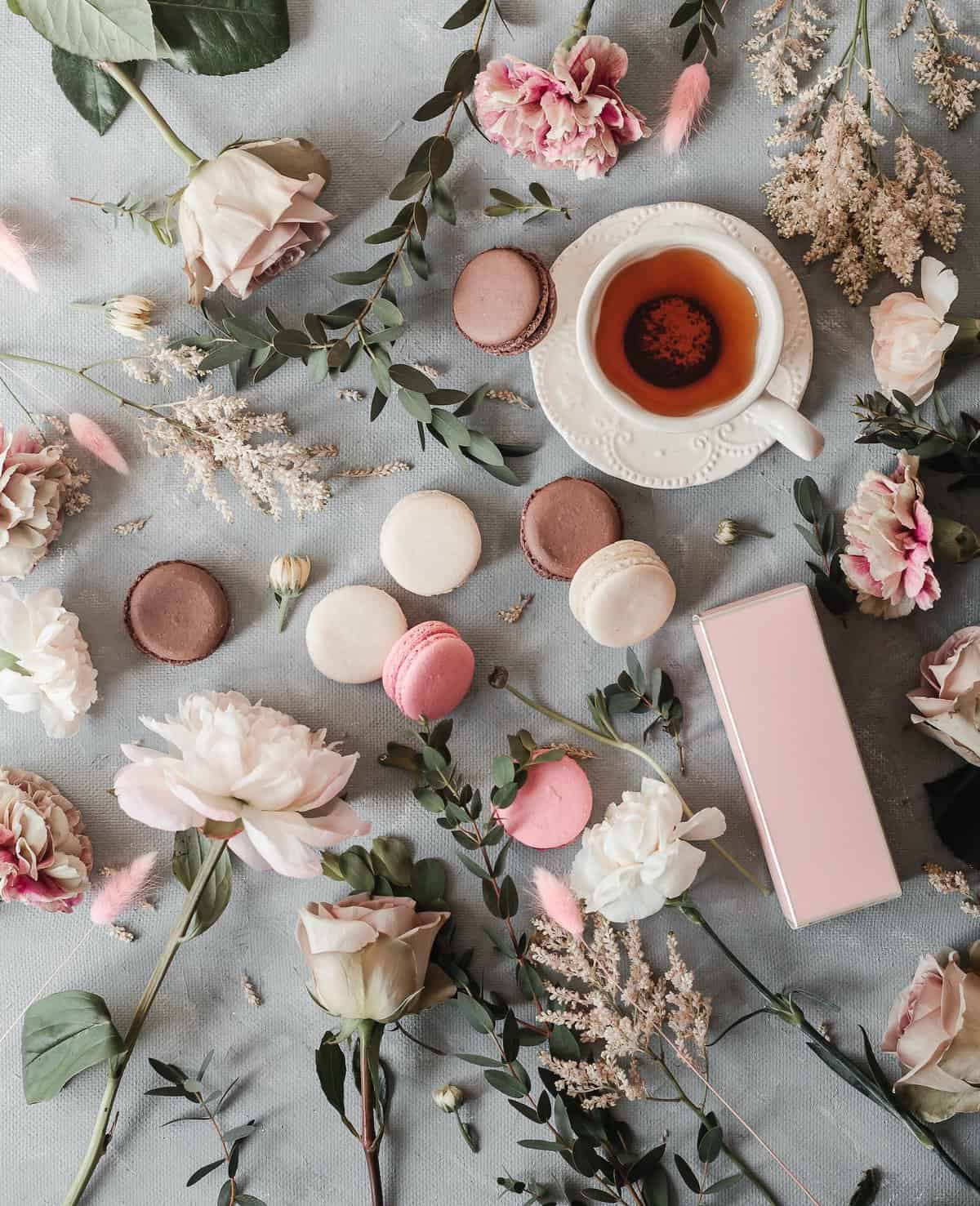
Did you know that learning how to dry herbs for tea at home can elevate your tea experience to a whole new level? With proper techniques and methods, you can enjoy the fresh, vibrant flavors and health benefits of your favorite herbs all year round. Join us on a journey to discover the art of how to dry herbs for tea!
Key Takeaways
Choose herbs for tea based on flavor, health benefits and preferences.
Harvest herbs at peak in the morning to ensure optimal flavor and potency.
Master water quality, temperature and steeping techniques when making herbal tea for best results.
Choosing the Right Herbs for Tea
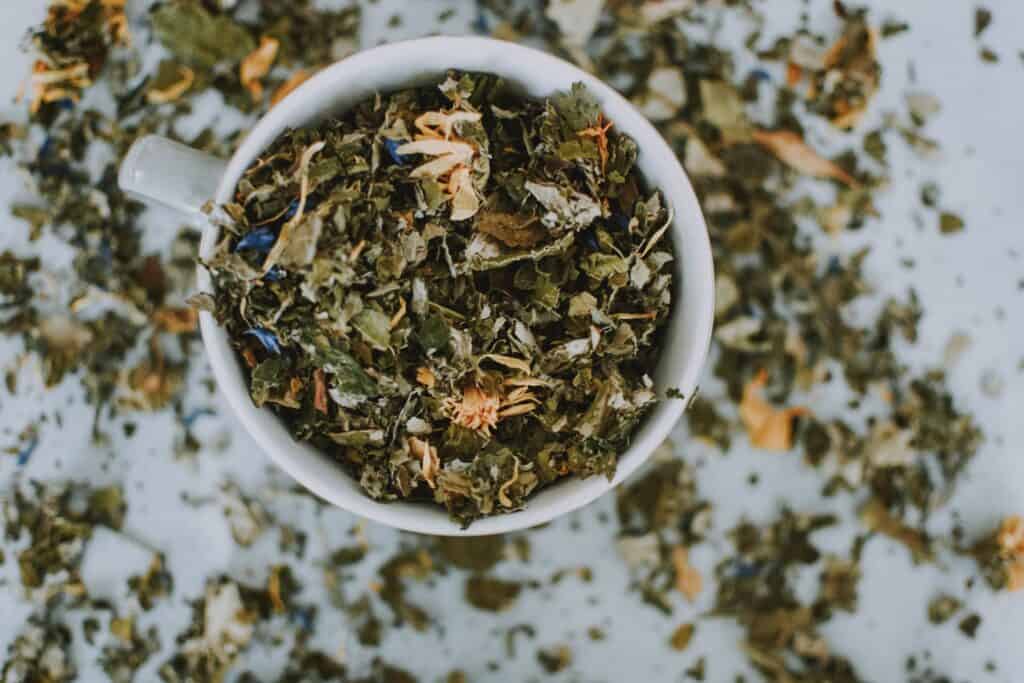
The first step in crafting the perfect cup of tea is to select the right herbs. Consider the flavor, health benefits, and personal preferences when choosing herbs.
Cultivating your own herbal tea plants gives you control over the quality, freshness, and sustainability, which contributes to a superior tea experience.
Popular Herbs for Tea
Some popular herbs for tea include chamomile, mint, lavender, lemon balm, lemon verbena, and green tea. Each herb has its unique flavor and potential health benefits. Incorporating tea fresh herbs into your daily routine can elevate your tea experience.
For example, chamomile tea is known for improving sleep quality and reducing inflammation. Experimenting with different herbs allows you to find the perfect blend that caters to your taste buds and well-being.
Growing Your Own Herbal Tea Plants
Growing your own herbal tea plants is a rewarding experience, providing you with fresh, pesticide-free herbs at your fingertips. Choose a suitable soil type and pay attention to the specific needs of each herb, such as acidity levels and sunlight requirements.
Regular watering and proper drainage are crucial for healthy plant growth.
Harvesting Herbs for Tea
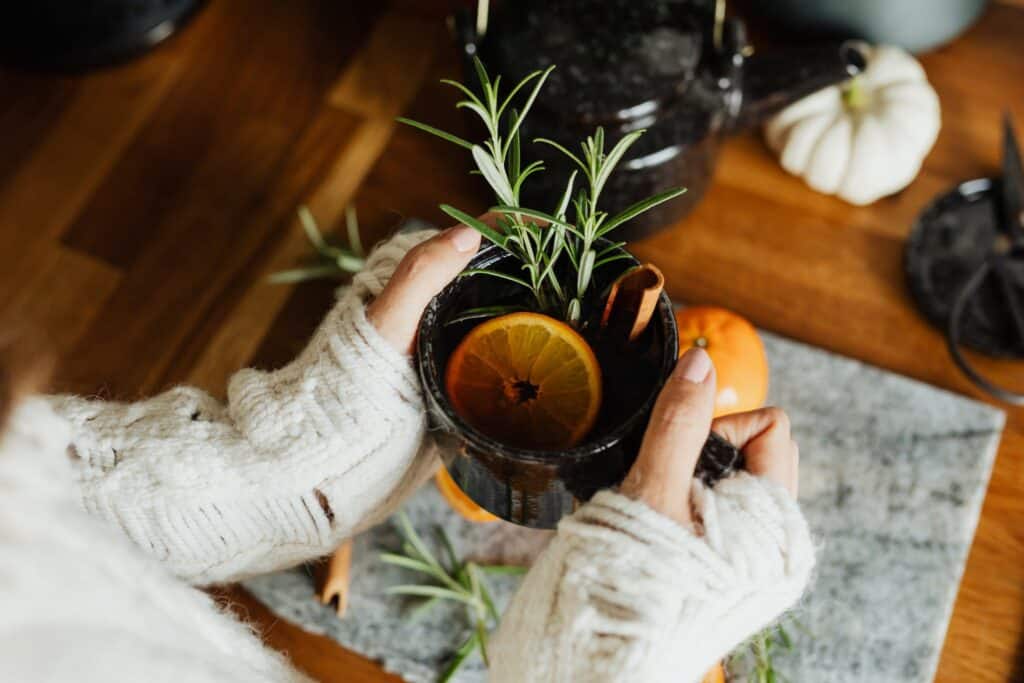
Mastering the art of harvesting herbs for tea, with a keen focus on the right timing and technique, is pivotal to guarantee optimal flavor and potency.
Harvesting herbs at the right time is essential for the best flavor and potency. The
Best Time to Harvest
The best time to harvest herbs for tea is in the morning when essential oils are at their peak. Harvesting before flowering ensures maximum flavor and potency, as the leaves contain the highest concentration of volatile oils during this stage.
These essential oils contribute to the overall taste and therapeutic properties of the tea.
Proper Harvesting Techniques
Utilize clean, sharp scissors or pruning shears when harvesting herbs for tea. Cut the stems down to one-third of the plant’s height. Make sure to cut just above a set of leaves. This promotes future growth and encourages the plants to branch out, resulting in bushier and healthier fresh herbs.
Harvesting herbs for tea is an easy and rewarding task. It can be done in
Preparing Herbs for Drying
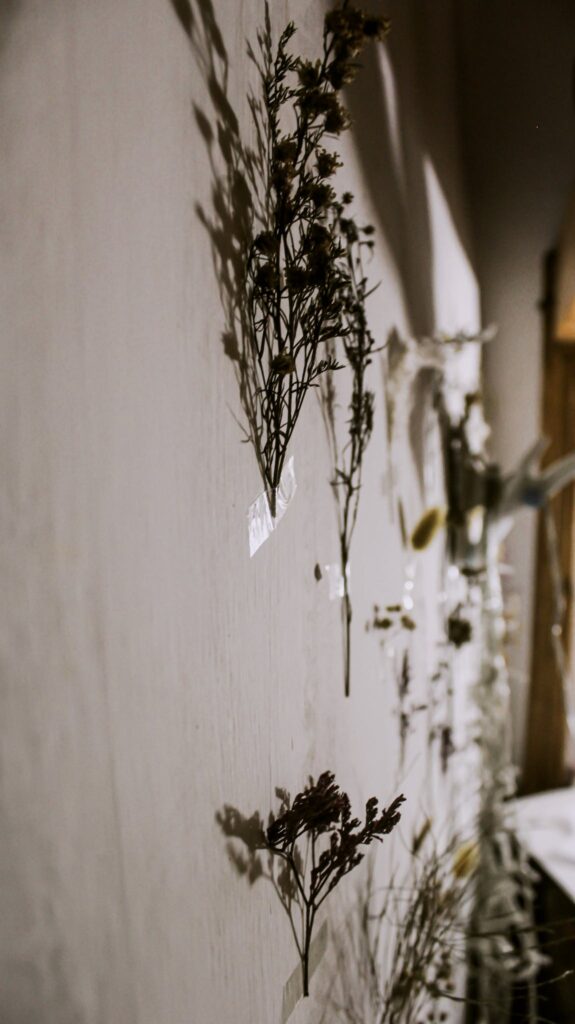
Cleaning and trimming the herbs prior to drying are crucial steps to achieving optimal drying conditions. This involves removing damaged or diseased leaves, as well as cutting stems to a manageable size.
To Wash or Not to Wash?
Washing herbs before drying is a matter of personal preference. If you decide to wash your herbs, avoid soaking them and gently rinse if necessary to prevent mold or rot.
Make sure the herbs are completely dry before proceeding to the drying process for your dry fresh herbs.
Trimming and Sorting
When trimming and sorting herbs, follow these steps:
Remove any damaged or diseased leaves.
Cut stems to a manageable size for drying.
Ensure that only the desired parts of the herb, such as leaves or flowers, are used for tea.
Discard any unwanted parts like stems or twigs.
Proper trimming ensures that you are using the best parts of the herb for your tea.
This helps to ensure that the tea is of the highest quality and free of any contaminants. Additionally
Methods for Drying Herbs
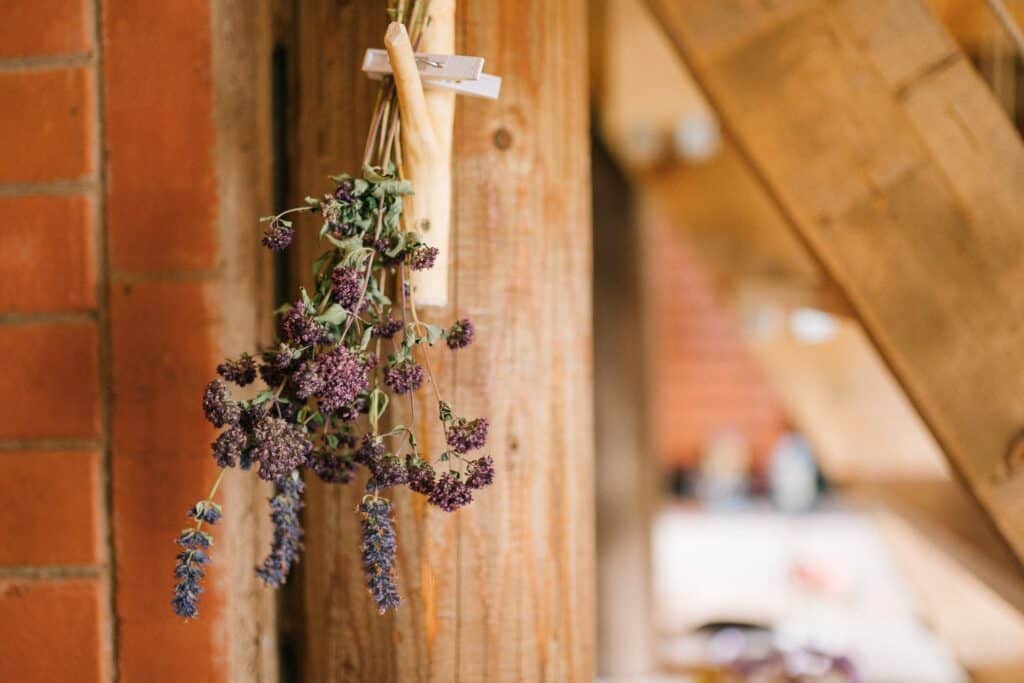
A variety of methods can be employed to dry herbs, including:
Air drying
Oven drying
Dehydrator drying
Microwave drying
Each method has its advantages and disadvantages, and the choice depends on personal preferences and available resources.
Air Drying
Air drying is a slow but effective method for drying herbs, especially in low-humidity environments and for woody herbs. Hang the herbs upside down in a warm, dry place out of direct sunlight, such as an empty closet or in paper bags with ventilation holes.
This method preserves the herbs’ flavor and color while minimizing the risk of mold or rot.
Oven Drying
Oven drying is a convenient method for small batches of herbs, but it requires careful temperature control to avoid burning. Preheat the oven to the lowest temperature setting, typically around 180℉, and lay the herbs in a single layer on a baking sheet.
Bake for approximately 1 ½ hours, turning the herbs occasionally to ensure even drying.
Dehydrator Drying
Dehydrator drying is a reliable and efficient method for drying herbs, preserving flavor and color while minimizing the risk of mold or rot. Place the herbs on the drying trays of a food dehydrator and set the temperature between 95-110°F (35-43°C).
The herbs should be left to dry for 1 to 4 hours, with periodic checks to ensure they are completely dry.
Microwave Drying
Microwave drying is a fast method for drying herbs but requires close monitoring to prevent overheating and loss of flavor.
Place herbs on a microwave-safe plate. Microwave in thirty-second increments, flipping them over after each session. Repeat about five times or until the herbs are completely dry.
Storing Dried Herbs
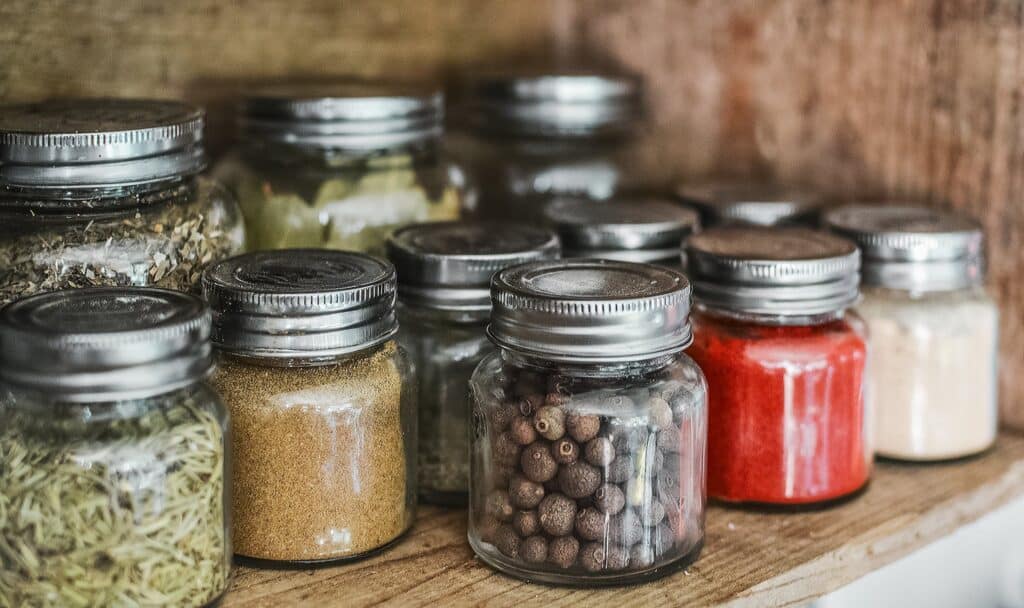
Storing your dried herbs properly is key to maintaining their flavor and potency. Utilize airtight containers and maintain optimal storage conditions to ensure the freshness of your herbal tea.
Airtight Containers
Airtight containers, such as glass Mason jars, are ideal for storing dried herbs. By using an airtight container, you can prevent moisture and air exposure, ensuring the herbs remain fresh and flavorful for an extended period.
Optimal Storage Conditions
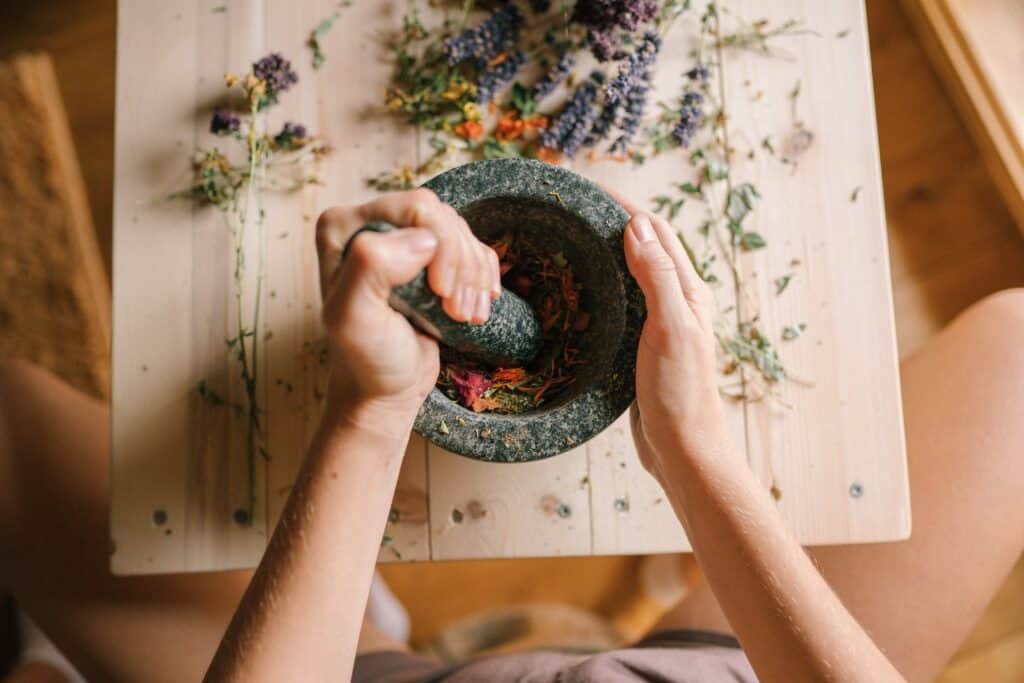
Optimal storage conditions for dried herbs include a cool, dark, and dry environment. Keep your herbs away from direct sunlight and heat sources to preserve their flavor and potency.
Creating Your Own Tea Blends
Crafting your own tea blends provides the opportunity to personalize the flavors and strength of your herbal teas by combining different herbs, offering a unique tea experience.
Combining Flavors
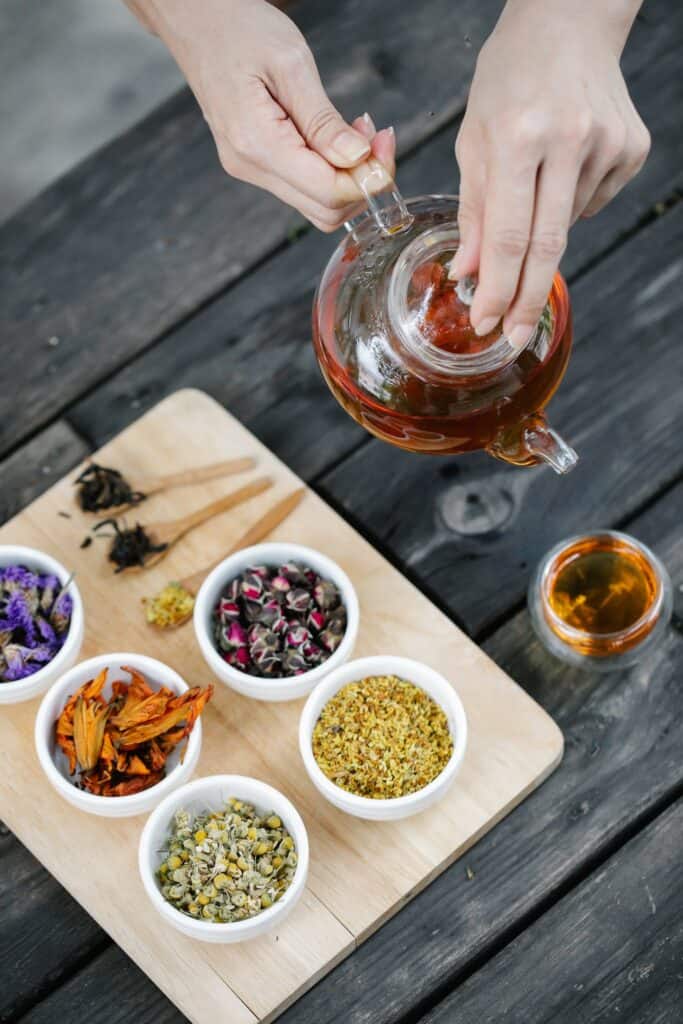
Experiment with different herbs and ratios to create a balanced and enjoyable tea blend. Combining various herbs can generate a more intense taste and aroma, allowing you to discover new and delightful flavors in your tea.
Try different combinations of herbs to find the perfect blend for your taste. Consider adding herbs like
Adjusting Strength
To adjust the strength of your tea blend, simply alter the amount of herbs used or the steeping time. This allows you to create the perfect cup of herbal tea that suits your taste preferences and desired potency.
You can experiment with different combinations of herbs and steeping times to find the perfect blend for you
Brewing the Perfect Cup of Herbal Tea
The quality of water, its temperature, and the steeping techniques employed significantly influence the brewing of the perfect cup of hot tea, especially when it comes to herbal tea. By mastering these elements, you can extract the full flavor and benefits of the herbs in your tea.
The quality of the water you use is important. Tap water can contain minerals and chemicals that
Water Quality and Temperature
Use filtered water to ensure the best taste and aroma in your herbal tea. Avoid boiling the water, as this can lead to a bitter taste and damage the flavor of the herbs.
Instead, use water that is slightly cooler than boiling for optimal results.
Steeping Techniques
Different herbs require different steeping techniques, such as infusions or decoctions, depending on their type. Infusions are made by steeping leaves and flowers in water. Decoctions, on the other hand, involve boiling stems, roots, or seeds..
Experiment with various steeping times and techniques to achieve the perfect cup of herbal tea that suits your taste preferences and desired potency.
Summary
In conclusion, drying herbs for tea at home is a rewarding and enjoyable process that allows you to savor the fresh flavors and health benefits of your favorite herbs all year round. By choosing the right herbs, mastering harvesting and drying techniques, and experimenting with different tea blends, you can create the perfect cup of herbal tea. So why not embark on this exciting journey and elevate your tea experience to new heights?
Frequently Asked Questions
Do you have to dry herbs before using them for tea?
It is recommended to use fresh herbs for tea, as drying can lead to a loss of flavor and aroma.
How do you dry herbs for tea without a dehydrator?
To dry herbs for tea without a dehydrator, expose the leaves, flowers or seeds to warm, dry air in a well ventilated area. Alternatively, bundle the herbs with the stems up and tie the ends of the bag closed, poking a few holes for ventilation, and hang the bag in a warm, well-ventilated room. In this way, your herbs may be dried and ready to store within one week.
What is the best way to air dry herbs?
For best results when air drying herbs, try hanging small bunches of herbs by the stem in a warm, well-ventilated room. You can also place herbs on a tray with a layer of paper towels to dry or use paper bags to contain moisture and protect from direct sunlight. Drying herbs should take 5-10 days.
Is it better to dehydrate or hang dry herbs?
For herbs that are less tender, like rosemary, sage, thyme, summer savory and parsley, it is best to hang dry them. For more moisture-rich herbs like basil, chives and mint, it is better to use a dehydrator, air fryer or oven for drying.
What leaves to dry for tea?
Harvesting the leaves of common herbs such as mint, lemon balm, nettles, thyme, bee balm, stevia, rosemary, raspberry, and hyssop is a popular and easy way to dry tea leaves.

